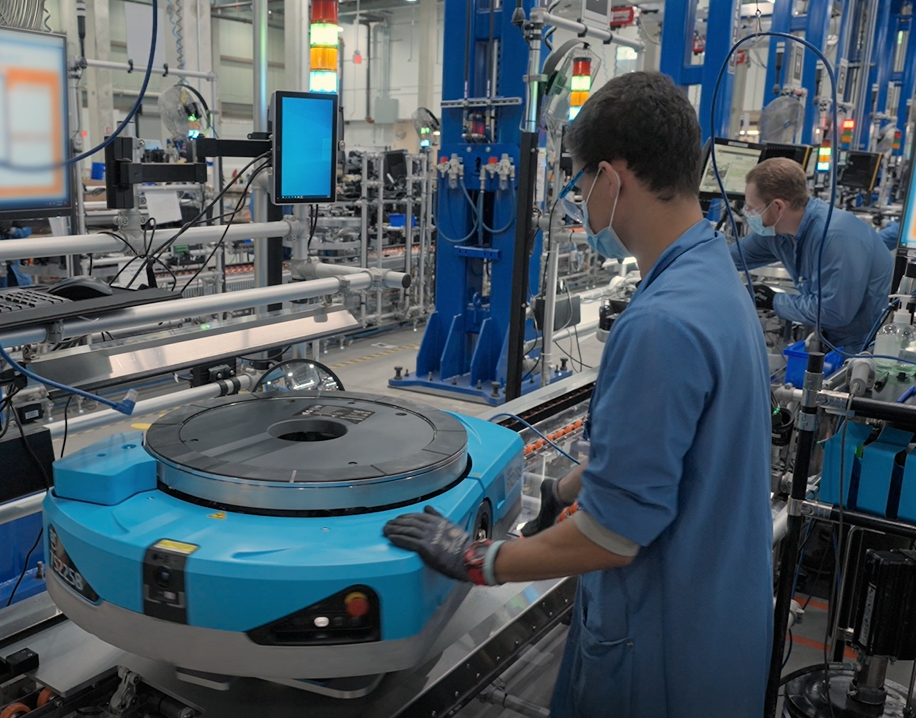Amazon’s New Robot, Titan, Lifts Pressure Off Bulk-Item Fulfillment
Amazon is tapping a heavy lifting champion to expedite bulk-item transportation within its fulfillment efforts, but it’s not what you think.
Titan, Amazon’s latest mobile robot, is taking the weight off employees by streamlining product hauling, introducing operational efficiencies, and adding an extra layer of safety.
The tech will work primarily with larger items like small household appliances, gardening equipment, or pallets of pet food.
Titan’s Transformative Build
The company said Titan builds on over a decade of robotics innovation at Amazon, able to lift up to two times more weight than Hercules, currently the most broadly deployed Amazon robot.
The latest robot tech, which supports 2,500 pounds of weight, pulls capabilities from several existing models, including Hercules’ battery and charging management, Xanthus’ computer vision, obstacle detection, and user control systems, and Proteus’ operating hardware.
Amazon’s Robotics Timeline
- 2012: Acquired Kiva Robotics
- 2014: Deployed Atlas to transport totes weighing up to 750 pounds
- 2017: Deployed Hercules, which can lift up to 1,250 pounds
- 2019: Introduced Pegasus, which uses a conveyor attachment to ferry individual packages
- 2023: Testing Digit, a bipedal human-centric robot that can automate fulfillment tasks
- 2023: Deployed Proteus, the first autonomous model that works alongside employees
- 2023: Introduced Cardinal, which uses AI and computer vision
The company began to pilot similar robots last year, expanding past its typical cloud-based algorithm robotics, which were more restricted in their movements, and moving towards a self-navigating model.
Collaborative Robotics
Amazon has a decade-long history of leveraging robotics within its supply chain, and is now looking at its tech with a more holistic, collaborative approach. Titan, for example, may soon be paired with containerized storage robotics Sequoia, transporting inventory across the supply chain floor to bring it directly to employees.
“Mobile robots like Titan work collaboratively with other robotics systems to create a safer and more ergonomic workplace that reduces repetitive motions, eliminates the need for employees to walk long distances or move heavy objects, and allows employees to focus on new tasks that require new skill,” said Scott Dresser, VP of Amazon Robotics, in a recent blog post.
The first fulfillment center that will reap the benefits of Titan is located in San Antonio. The facility opened in 2013 and primarily processes bulk items.
Amazon manufactures its robots at an innovation hub in Massachusetts. It has deployed over 750,000 robots across its fulfillment centers globally. Recordable incident rates and lost-time incident rates were 15% and 18% lower, respectively, at Amazon robotics sites than at non-robotics sites in 2022, per Amazon.
“We are excited by all the promise and potential of Titan, and we remain laser focused on continuing to evolve our robotics systems, building off of our decades of research to create a better and safer workplace while delivering for our customers with greater speed, accuracy, and ease,” said Dresser.
Robots and Humans: A Carefully Choreographed Dance
The company recently provided a glimpse into the symbiotic back-end relationship between human and robot.
Mohammed Khan, assistant general manager at the Amazon robotics fulfillment center in Northern California shared details about the various roles that are engaging with state-of-the-art technology to stow, pick, pack, and ship orders across the world.






